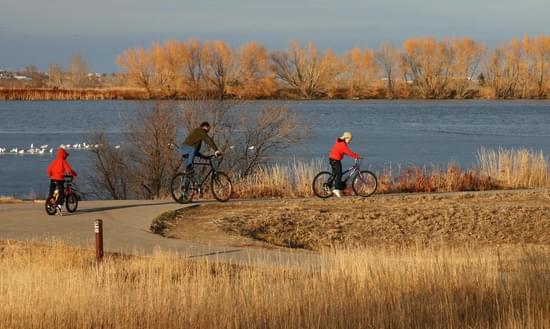




The desire to recreate, exercise and enjoy natural beauty.

Amy Pendergast of Healthy Shasta asked a question that made me stop and think: “What are the top things that are most likely to draw people to the trail as repeated trail users?”
We want trails to be attractive, in the broadest sense of the word, but what does that mean? For walkers, the classic popular trail is a loop around a lake that provides a half to two mile trip. Whether biking or walking, people like loop trails way better than backtracking. You’ll even see people walking around and around a ballfield or park. However, a trail up a hill to an overlook is also popular. The greenway along a river corridor is another one, and even better if there is a trail on both sides of the waterway so they can make a loop.
If you’re talking about desire for recreation or exercise, people highly value natural beauty and access to seeing big trees, water, wildlife, wetlands, etc. Destination is almost irrelevant. Of course, in the bigger picture, what we really want is a variety of trails that link together and provide more choices of distance, access point, and type of experience.
It’s also true that people like walking around an attractive neighborhood (not necessarily their own) more than a long, straight trail or a route along a busy highway. They also want easy parking, a sense of safety, a map and signs so they won’t feel lost. Being able to enjoy a trail in every season also brings people back during the year. And for many, a wide easy trail facilitates socializing and getting together with a group.
Of course there are different interests, and what I’ve been describing is more for “mature” walkers or families. Others are looking for trails with specific exercise attractions for running, mountain biking, or a serious climb in elevation. There are more subtle factors as well: a sense of discovery, changing vistas, a little adventure. And finally, places with real birding opportunities, native habitat, and nature study are also appealing. We’d be interested in hearing your suggestions on what makes a community trail attractive, and any good examples.
Why Trails Matter: Trails and Greenways Promote Health
posted Feb 1, 2024
Trails and greenways create healthy recreation and transportation opportunities by providing people of all ages with attractive, safe, accessible and low- or no-cost places to cycle, walk, hike, jog or skate.
STEP IT UP! The Surgeon General’s Call to Action to Promote Walking and Walkable Communities
posted Jan 22, 2024
The Call to Action provides strategies that communities can use to support walking, which we hope will result in long-lasting changes to improve the health and health care of Americans today and of the generations that follow.
Parks, Trails, and Health Workbook
posted Dec 29, 2023
Consider this workbook as a starting point. Every project is different. This workbook is intended as a guide to be adapted for specific situations.
posted Dec 29, 2023
Call it walking. Call it hiking. Seldom has something so much fun also turned out to be so good for us!
1,311 views • posted 11/25/2011